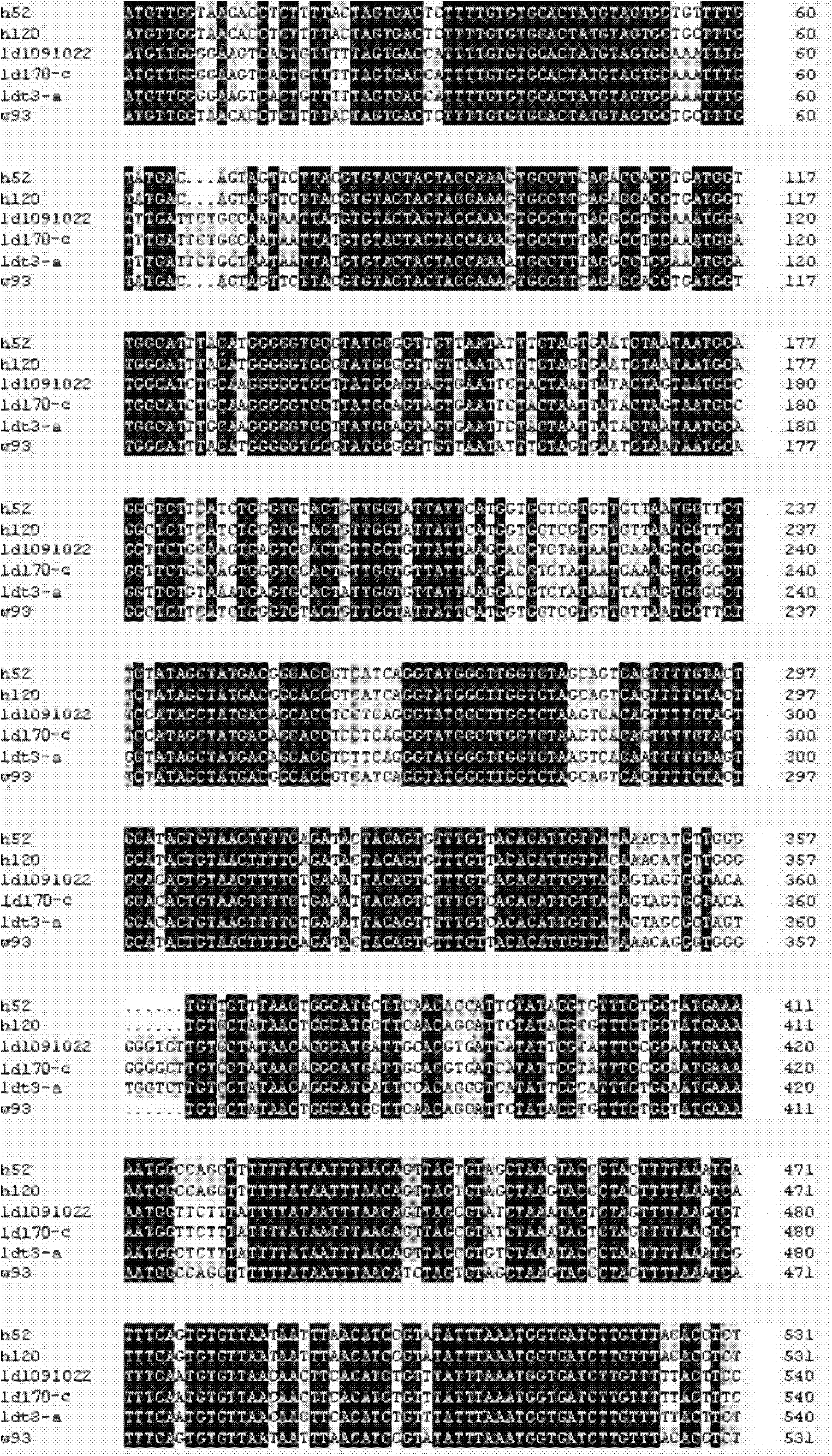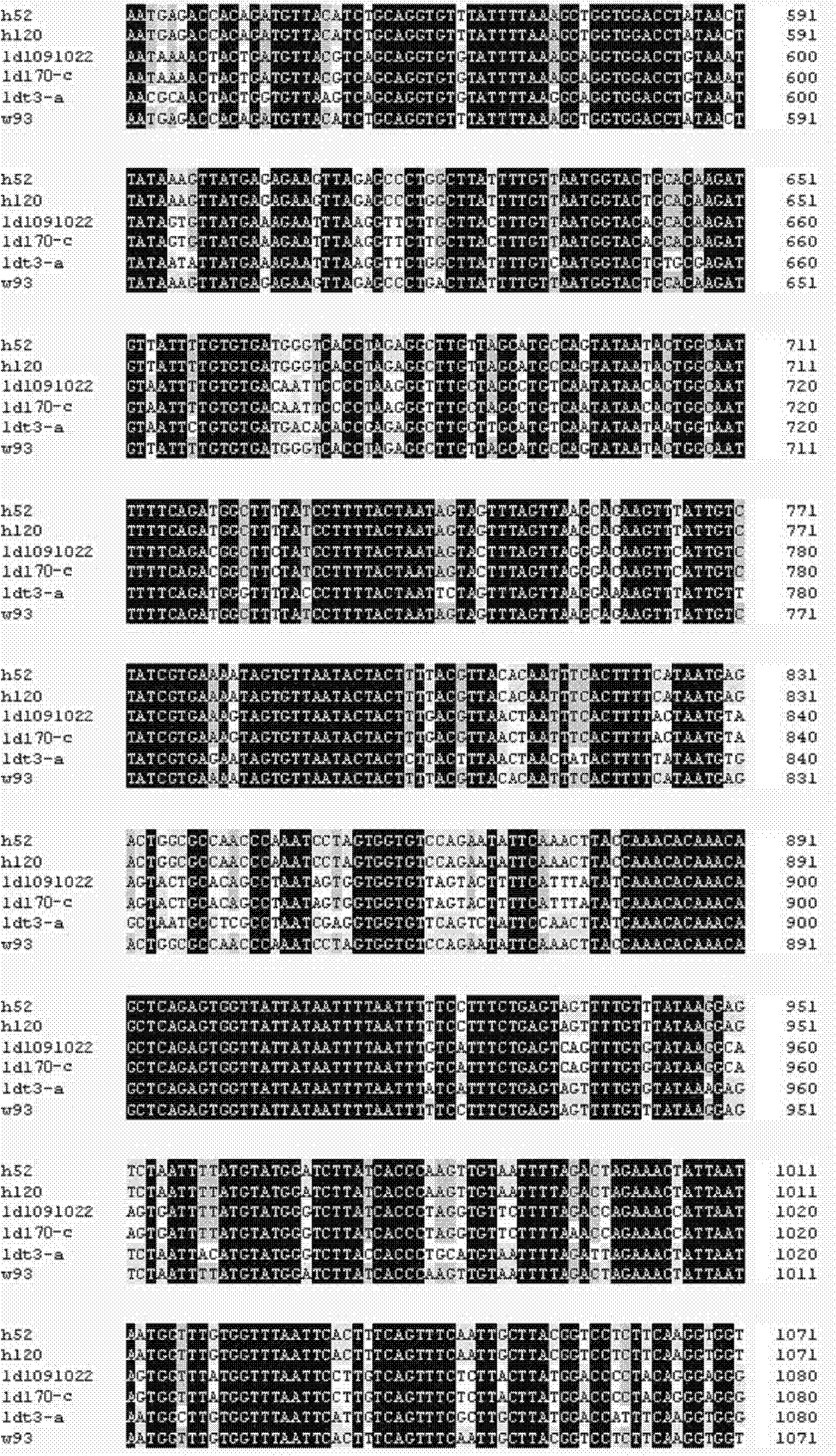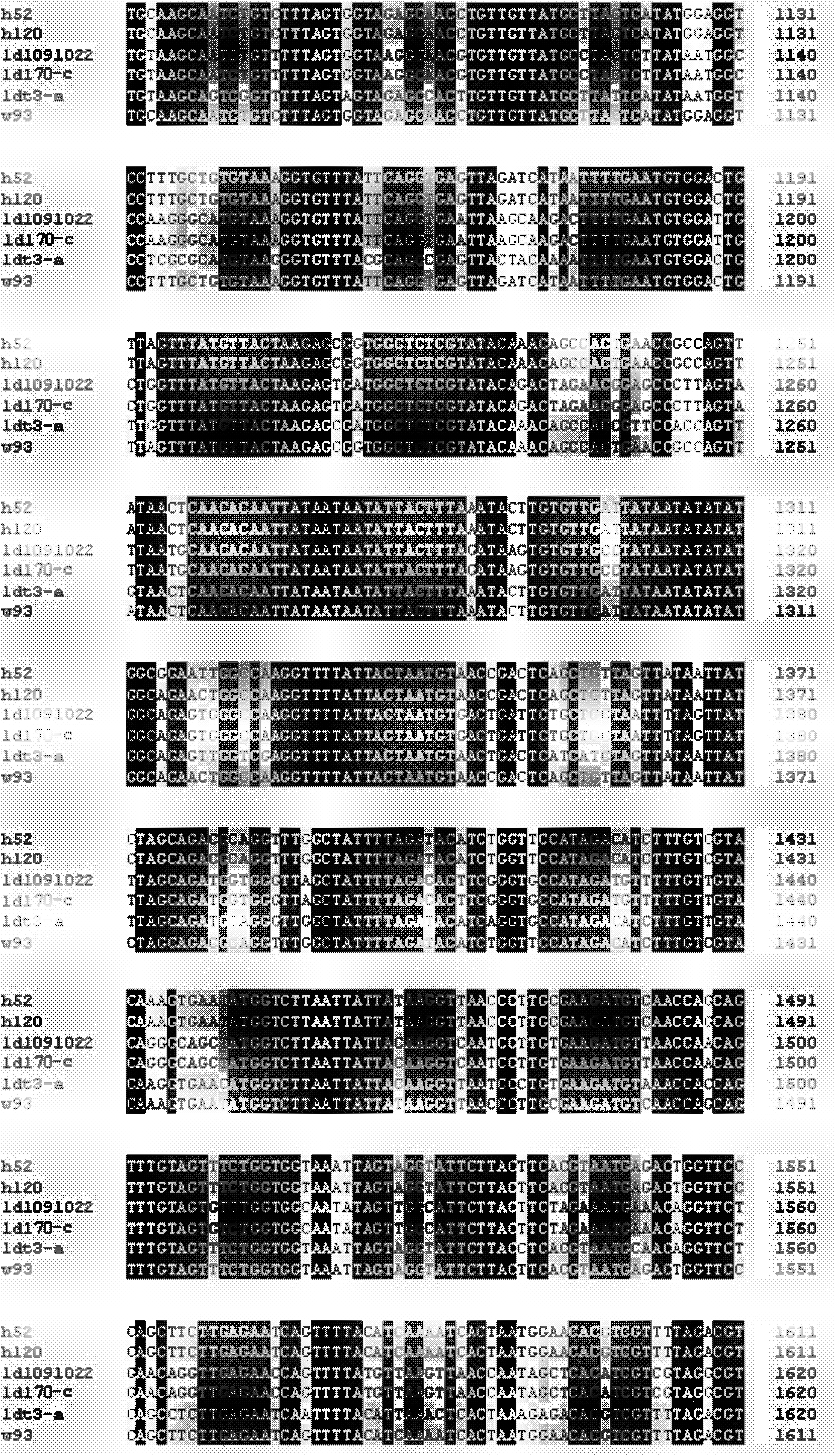Avian infectious bronchitis cold adaptation attenuated vaccine strain and application thereof
A technology for bronchitis and chicken infectiousness, applied in the field of prevention and treatment of chicken infectious bronchitis, can solve the problems of inability to effectively prevent and control the attack of popular strains of chicken infectious bronchitis virus and unsatisfactory control effect, and achieve Good protection effect, good safety effect
- Summary
- Abstract
- Description
- Claims
- Application Information
AI Technical Summary
Problems solved by technology
Method used
Image
Examples
experiment example 1
[0024] Experimental example 1 Breeding and identification of chicken infectious bronchitis cold-adapted attenuated vaccine strain LDL70-C strain of the present invention
[0025] 1 Materials and methods
[0026] 1.1 The cold-adapted subculture of virus strain LDL091022 was attenuated
[0027] Use 9-10 day-old SPF chicken embryos to carry out continuous low-temperature cold-adapted subculture of the highly virulent IBV strain LDL091022. In each passage, 3 chicken embryos were inoculated through the allantoic cavity, and each embryo was inoculated with 100 μL. The culture conditions were as follows: from 35°C At the beginning, reduce 1°C every 10 generations, and incubate for 72 hours for each generation. After 72 hours, take out the chicken embryos, observe the lesions of the chicken embryos, collect the allantoic fluid of the chicken embryos aseptically, and carry out the next passage until the incubation temperature reaches 30°C. The later subcultures were all cultured at 30...
experiment example 2
[0058] Experimental example 2 The immune efficacy and protective effect experiment of the cold-adapted attenuated vaccine strain LDL70-C strain of the present invention
[0059] 1. Experimental method
[0060] 1.1 Preliminary evaluation of the immune efficacy of LDL70-C
[0061] 1.1.1 Immunological efficacy test of 10-day-old SPF chicken
[0062] Forty 1-day-old SPF chickens were randomly divided into 2 groups (20 in each group), and were raised in a negative pressure isolator, and the chicks had free access to food and water. At 10 days of age, one of the group of chicks was treated with LDL70-C (P70, 10 4 EID 50 ) for inoculation with 100 μL intranasally; another group of chicks was used as a control group with 100 μL normal allantoic fluid intranasally. From the date of inoculation, observe and record the incidence and death of inoculated chickens every day, and 14 days after immunization, collect serum from each group for specific antibody detection. For specific metho...
experiment example 3
[0076] Experimental example 3 Preparation of chicken infectious bronchitis attenuated vaccine
[0077] Take the attenuated vaccine strain of the present invention (LDL70-C strain), restore the culture condition to 37°C, proliferate the virus seeds for production, dilute the virus seeds for production by 100,000 times with sterilized physiological saline, and inoculate them in 9-10 day-old SPF chicken embryos In the allantoic cavity, inoculate 0.1ml per embryo, seal the pinhole after inoculation, and incubate at 37°C. The chicken embryos were inoculated for 24 hours and the embryos were illuminated, the dead embryos were discarded, and the air chamber of the chicken embryos incubated at 37°C for 30-72 hours was upward, and placed at 4°C to cool for 4-24 hours. Harvest the virus allantoic fluid, mix several chicken embryo allantoic fluids into a group, put them in a sterilized bottle, store them at 2-8°C, and do a sterility test at the same time, and the virus content should be ...
PUM
 Login to View More
Login to View More Abstract
Description
Claims
Application Information
 Login to View More
Login to View More - R&D
- Intellectual Property
- Life Sciences
- Materials
- Tech Scout
- Unparalleled Data Quality
- Higher Quality Content
- 60% Fewer Hallucinations
Browse by: Latest US Patents, China's latest patents, Technical Efficacy Thesaurus, Application Domain, Technology Topic, Popular Technical Reports.
© 2025 PatSnap. All rights reserved.Legal|Privacy policy|Modern Slavery Act Transparency Statement|Sitemap|About US| Contact US: help@patsnap.com



